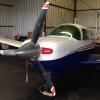Flying in the Washington DC Special Flight Rules Area
-
Members Online
- Kerrville
- 67 m20F chump
- FlyingScot
- MB65E
- AIREMATT
- IvanP
- FlyingDude
- eman1200
- 231GKY
- DanM20C
- Piaggio410
- Chester
- noonecaresworkharder
- Fly Boomer
- EricJ
- KLRDMD
- cliffy
- Mooneymite
- Hradec
- TCC
- LANCECASPER
- bhtitle
- chrisburdzy98
- Glen S.
- ttflyer
- FoxMike
- midlifeflyer
- Sailorsmuse1
- Lptoro
- N201MKTurbo
- hazek
- dzeleski
- MikeOH
- BlueDun
- natdm
- Steve2019


Recommended Posts
Join the conversation
You can post now and register later. If you have an account, sign in now to post with your account.